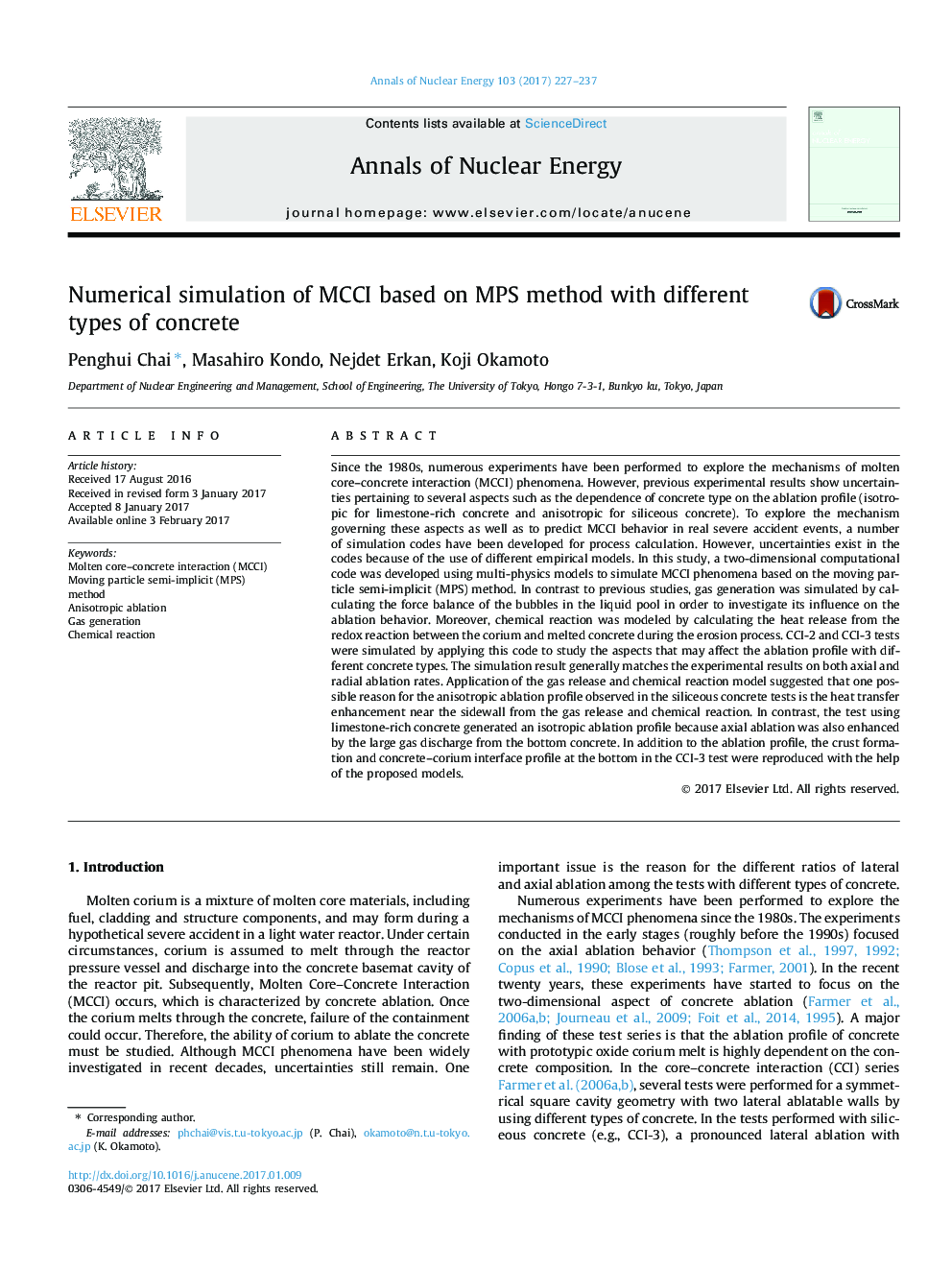| Article ID | Journal | Published Year | Pages | File Type |
|---|---|---|---|---|
| 5475219 | Annals of Nuclear Energy | 2017 | 11 Pages |
Abstract
Since the 1980s, numerous experiments have been performed to explore the mechanisms of molten core-concrete interaction (MCCI) phenomena. However, previous experimental results show uncertainties pertaining to several aspects such as the dependence of concrete type on the ablation profile (isotropic for limestone-rich concrete and anisotropic for siliceous concrete). To explore the mechanism governing these aspects as well as to predict MCCI behavior in real severe accident events, a number of simulation codes have been developed for process calculation. However, uncertainties exist in the codes because of the use of different empirical models. In this study, a two-dimensional computational code was developed using multi-physics models to simulate MCCI phenomena based on the moving particle semi-implicit (MPS) method. In contrast to previous studies, gas generation was simulated by calculating the force balance of the bubbles in the liquid pool in order to investigate its influence on the ablation behavior. Moreover, chemical reaction was modeled by calculating the heat release from the redox reaction between the corium and melted concrete during the erosion process. CCI-2 and CCI-3 tests were simulated by applying this code to study the aspects that may affect the ablation profile with different concrete types. The simulation result generally matches the experimental results on both axial and radial ablation rates. Application of the gas release and chemical reaction model suggested that one possible reason for the anisotropic ablation profile observed in the siliceous concrete tests is the heat transfer enhancement near the sidewall from the gas release and chemical reaction. In contrast, the test using limestone-rich concrete generated an isotropic ablation profile because axial ablation was also enhanced by the large gas discharge from the bottom concrete. In addition to the ablation profile, the crust formation and concrete-corium interface profile at the bottom in the CCI-3 test were reproduced with the help of the proposed models.
Related Topics
Physical Sciences and Engineering
Energy
Energy Engineering and Power Technology
Authors
Penghui Chai, Masahiro Kondo, Nejdet Erkan, Koji Okamoto,
